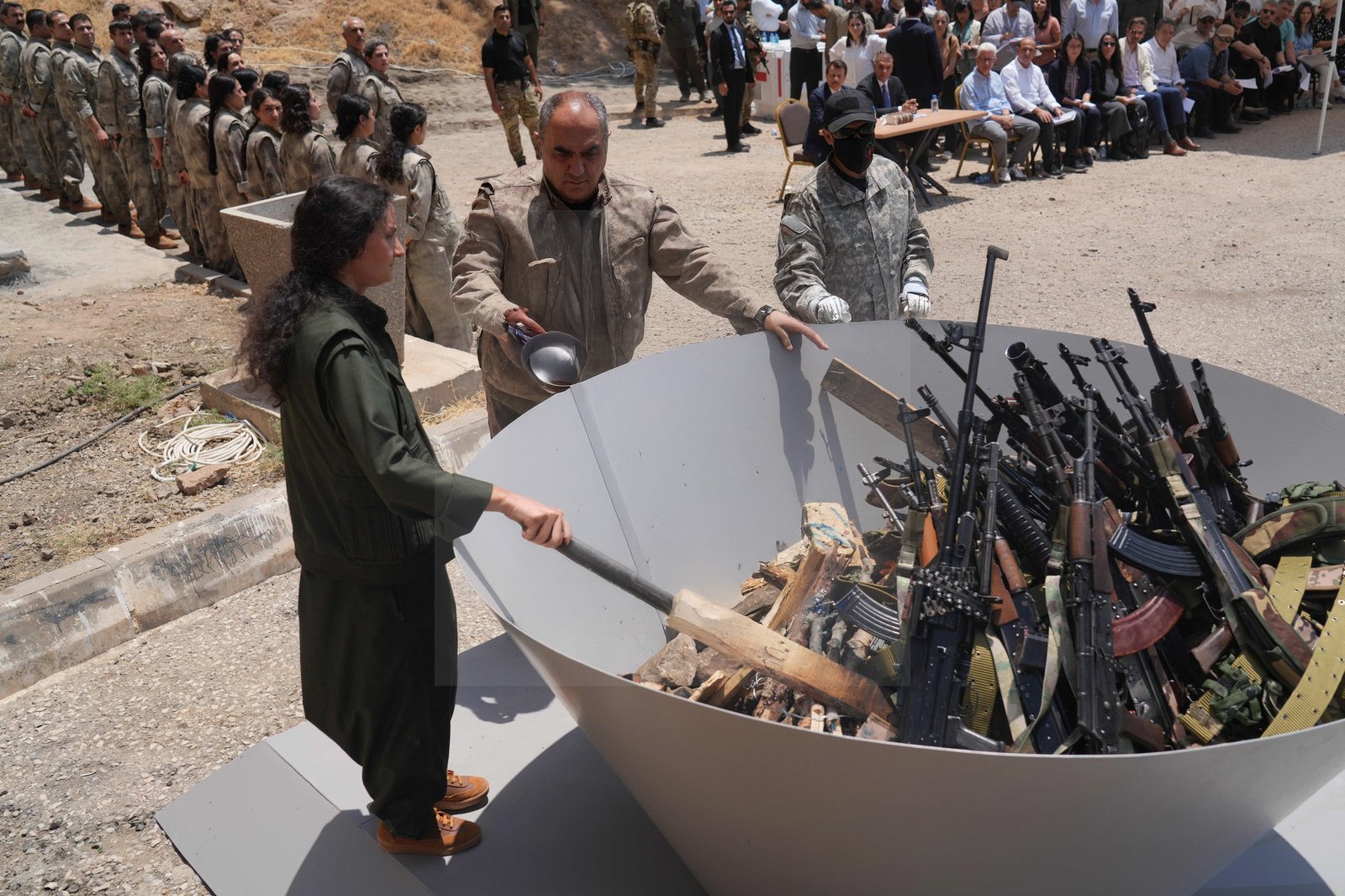Why did the PKK burn its weapons during today’s disarmament ceremony?

The long-awaited ceremonial disarmament of PKK fighters took place today in Sulaimani, Kurdistan Region. This symbolic event involved 30 fighters participating in what the organization described as a “goodwill gesture” to advance the ongoing peace process.
Context: The PKK, through its imprisoned leader Abdullah Öcalan, has been engaged in negotiations with the Turkish state since last year. The talks center on the PKK laying down arms in exchange for political reforms that would allow the Kurdish movement to participate in politics and secure enhanced cultural rights.
The process gained symbolic momentum when Devlet Bahçeli, leader of the ultranationalist MHP party and ally of President Erdoğan, shook hands with representatives of the pro-Kurdish DEM Party in the Turkish parliament. In February this year, Öcalan formally called on the PKK to disarm, and in May, the organization held a congress where it officially adopted the disarmament process.
Analysis: Today’s ceremony was fundamentally symbolic, and symbolism plays a crucial role in any peace process—particularly for an organization like the PKK, which has consistently employed visual gestures to convey political messages. The public burning of weapons serves to dramatize the conclusion of armed struggle and herald a new phase of political engagement and civil mobilization, themes that echo throughout Öcalan’s recent communications.
While Turkish pro-government media initially reported that the process would involve the PKK surrendering weapons for serial number verification and other technical procedures before Turkey took possession of them, the PKK appears to have rejected this arrangement. In today’s ceremony, no serial number verification occurred. Instead, PKK fighters placed their weapons in a container, which KCK co-chair Besê Hozat then set ablaze.
The act of burning weapons carries multiple layers of meaning. Unlike surrendering arms to a third party or placing them in storage, destruction represents a definitive, non-reversible commitment. This gesture aims to reassure both the public and former adversaries that disarmament is genuine rather than tactical. Moreover, by destroying the weapons themselves rather than handing them to Turkish or Iraqi forces—which could be perceived as capitulation—the PKK neutralizes its military capability without empowering its opponents. This approach also prevents these weapons from being repurposed by other factions or actors.
The PKK shapes the optics by orchestrating its own disarmament. The message is clear: this is not the state disarming them, but rather their conscious choice to abandon armed struggle. This distinction preserves organizational dignity and agency, crucial for maintaining internal cohesion and managing external perceptions. Such theatrical gestures have historical precedent—from Latin America to Africa, revolutionary movements have frequently destroyed their own weapons during peace ceremonies. This practice forms part of a broader tradition where guerrilla groups mark their transition with symbolic acts designed to ensure a dignified transformation.
The PKK demonstrated its characteristic attention to symbolism and ideological messaging, particularly regarding its core principle of radical gender equality. The composition of the group was precisely balanced: among the 30 fighters, there were exactly 15 women and 15 men, including four commanders (two women and two men).
The ceremony was led by Besê Hozat, whose identity carries additional symbolic weight. As both a woman and an Alevi from Dersim, her leadership role sends a deliberate message as the PKK transitions toward political struggle. While these details might appear incidental, they reflect the PKK’s strategic communication.
What has distinguished the PKK from previous Kurdish rebellions in Turkey is its capacity to transcend sectarian and ethnic boundaries—successfully organizing within both Sunni and Alevi communities, as well as among Kurmanji and Zaza populations. The organization clearly intends to maintain this inclusive approach as it evolves.








